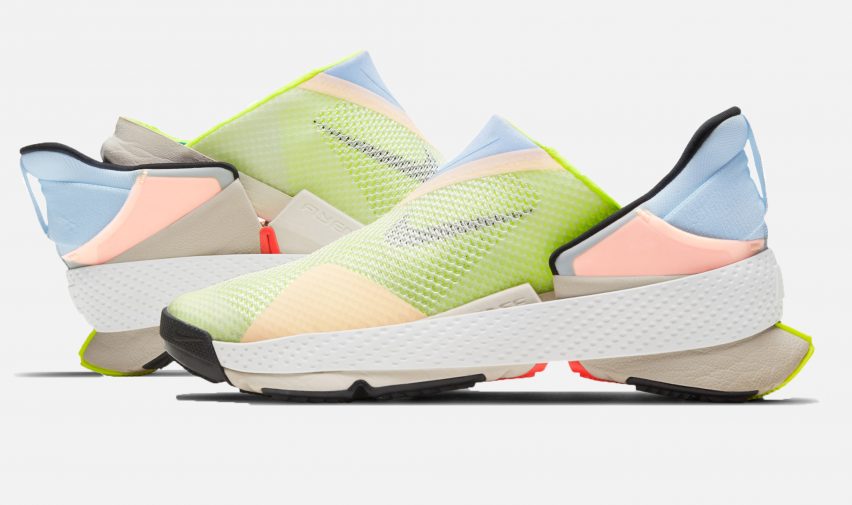
Nike reveals hands-free GO FlyEase trainer
Sportswear brand Nike has released the laceless Nike GO FlyEase trainers, which can be put on and taken off without using your hands to replace "antiquated" shoes with laces.
The latest trainer released in the FlyEase range, the Nike GO FlyEase is made of two sections connected by a hinge that allows users to put them on and take them off without tying shoelaces or using another fastening.

"Shoes for a long time have been a bit antiquated in the way that we undo the laces and then lace them up, this is a more modern, more elegant way to get in and out of your shoes and an easier way – you don't even think about it," explained Nike design lead and American Paralympic triathlete Sarah Reinersten.
"There are no laces, and there's no need to use hands when you have no laces," she told Dezeen. "So there's no laces or adjustable containment needed. It has a beautiful new, clog-like shape that's very easy to slip into."
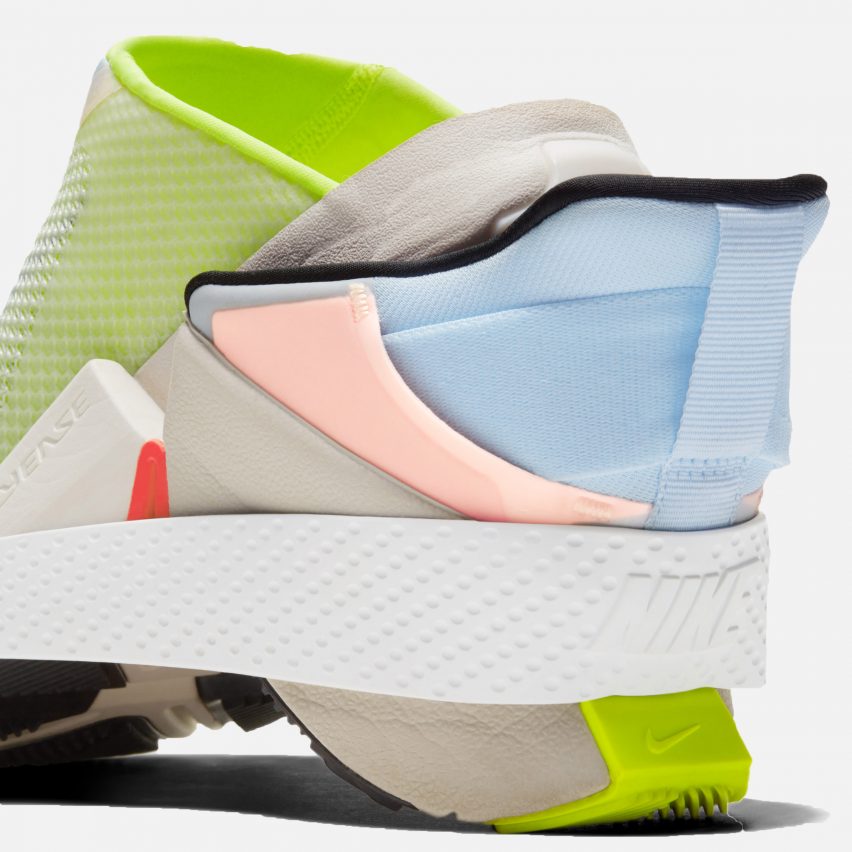
Nike has eliminated the need for laces or other fasteners by building the shoe around a patent-pending bi-stable hinge within the sole.
Combined with a large rubber band – called a midsole tensioner by Nike – this hinge allows the shoe to be secure in both an open position for the foot to enter and a closed position for when the trainers are in use.
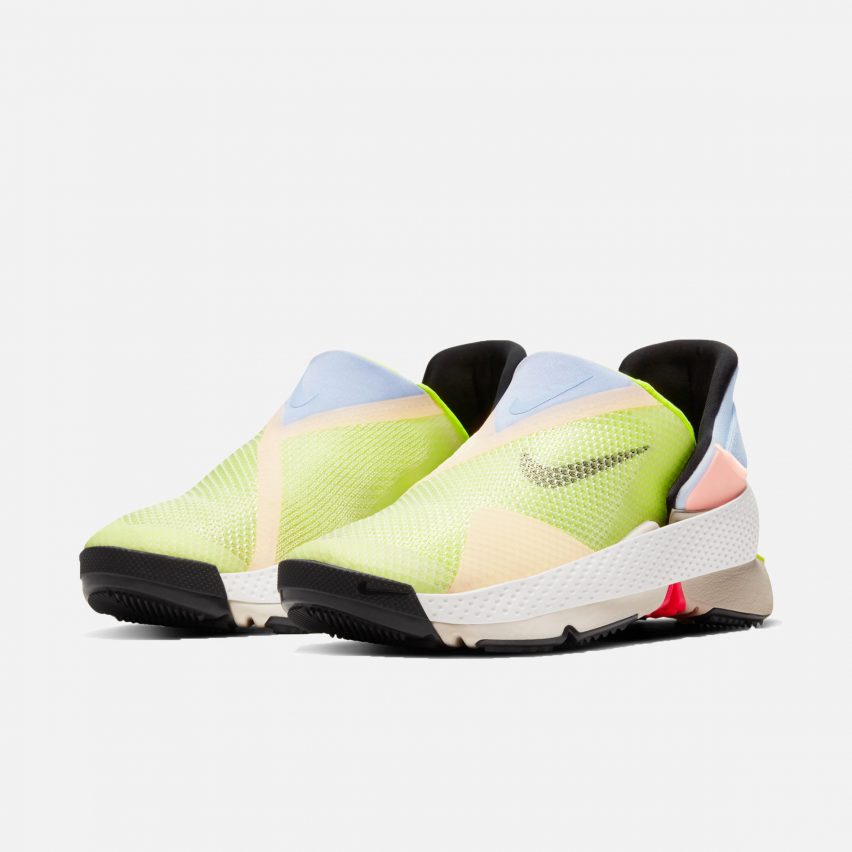
"The bi-stable hinge means that it will keep stable when it's in that open or ready position," said Reinersten.
"So when it's on your floor, it's super stable, but once you get into the set position, and you step down, it will stay in this position, it's not going to pop back up. So it's stable when it's closed, and then it's stable when it's open," she added.
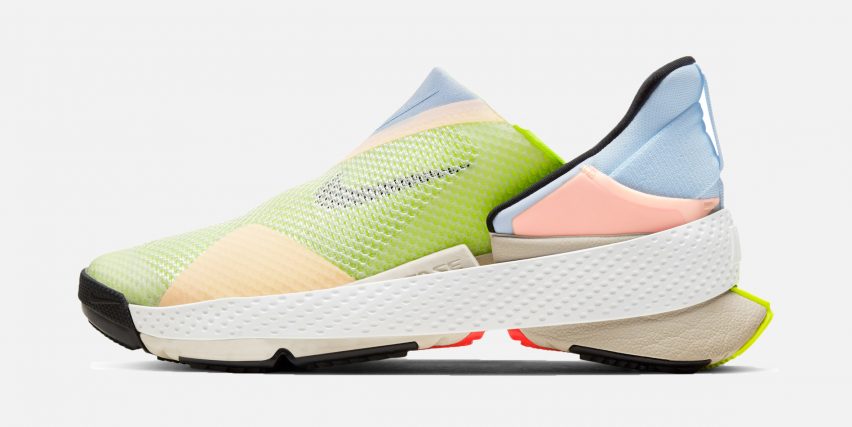
Although they are mechanically complicated, the trainers are designed to be intuitive to put on and take, with the process being similar to the way many people already slide into shoes and then kick them off.
The emphasised kickstand heel was designed to help users mimic this action.
"We designed this based on human behaviour," said Reinersten. "So we feel like this is intuitive in the way that your foot goes into a shoe – you can step in and go."
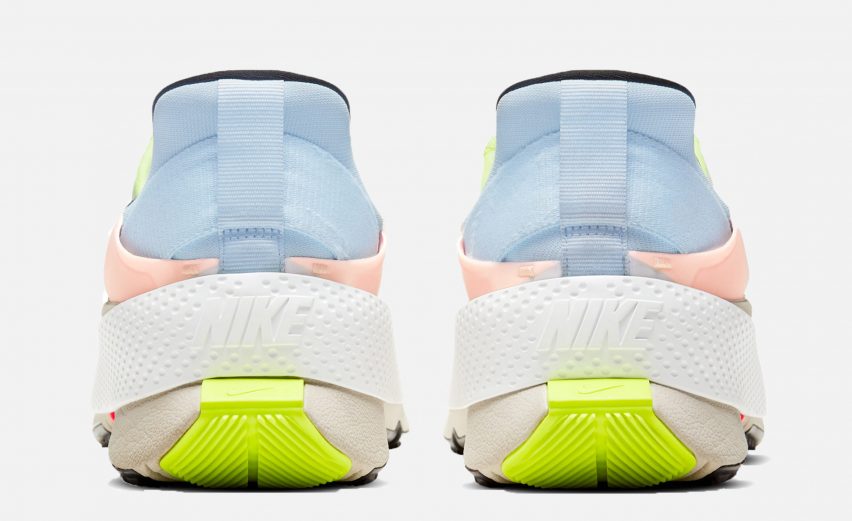
Nike has designed the shoe to be used as an everyday shoe, but also believes that it can be used by a lot of people who find it difficult to put their shoes on.
"This is one of the most universal shoes ever," said Reinersten. "This is a solution for so many people. This is for everybody."
"From women who are going through pregnancies to maybe an athlete who doesn't have hands, to a busy mom, to, I don't know, even a lazy husband who wants to walk the dog."
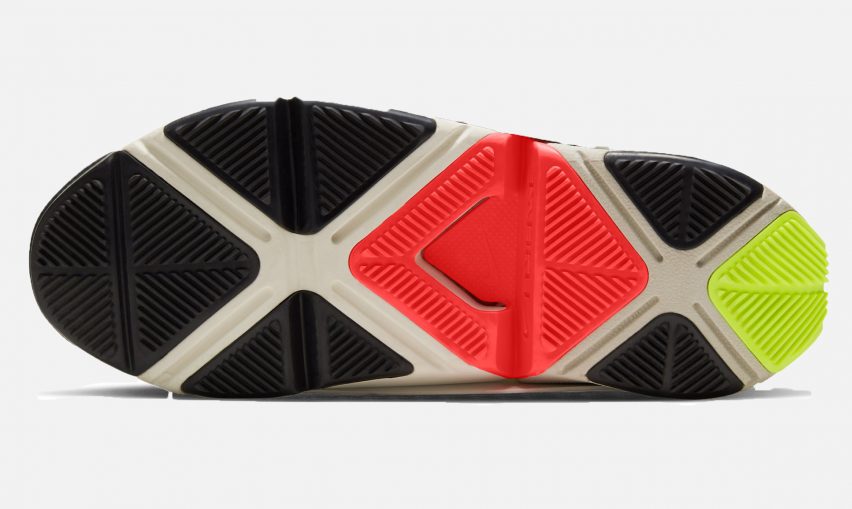
The Nike GO FlyEase is the latest trainer in the FlyEase range, which was launched five years ago and includes the Nike Air Zoom Pegasus 35 FlyEase, which was launched in 2019. While previous editions still required a hand to open, this is the first shoe that is entirely hands-free.
"We've been using shoelaces for kind of a long time," said Reinersten.
"And although we've been reinventing alternative closures in our shoes, and with the FlyEase collection, we've been doing that for over five years, but we knew we could do even better," she continued.
"We knew there was a better way to put on and take off your shoes and we knew that we were the company to make that a reality."
Nike has also created a pair of laceless basketball trainers that tighten at the touch of a button or swipe of a smartphone. Sports brand Puma also created a pair of trainers that can be tightened at the swipe of a finger.